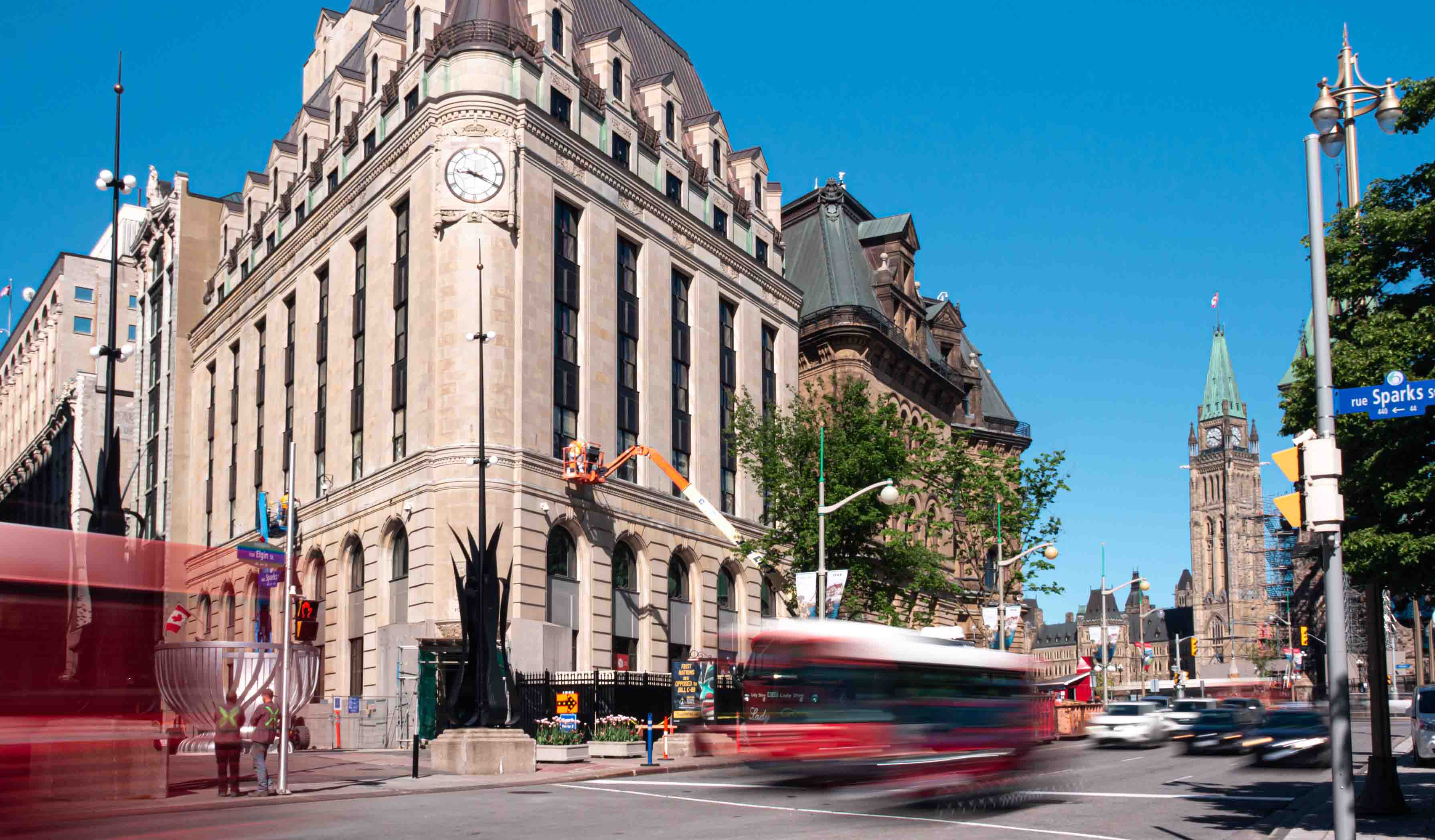Hidden in history: Creating invisible mechanical systems in heritage buildings
November 20, 2020
November 20, 2020
Replacing mechanical elements of heritage buildings can be a challenge. Here’s how to deal with space constraints and maintain the building’s character.
One of the very first heritage buildings I worked on in Ottawa listed a “quiet” ventilation system as one of its heritage characteristics. I was shocked. It had never occurred to me that the acoustical properties of a mechanical system would be a character-defining element. To me, character-defining elements were fabulous moldings and works of art, from the days when hand-carved wood and stone masonry were not just embellishments but primary building materials, adhering to the principles of classical architecture. These were the elements of proportion, symmetry, and balance that created a building pleasing to the eye.
Now, years later, experience has taught me that there is so much more to “heritage.”
As a mechanical engineer, I’ve discovered a lot about how to successfully combine mechanical systems into the design of a heritage building—dealing with space constraints while keeping the building’s character. If you’re looking to employ a modern mechanical system in a heritage building, here’s some of what I’ve learned.

Ottawa, Ontario, is well known for its federal buildings, most of which have a heritage designation. These buildings require special reviews of intervention before proceeding with preservation, rehabilitation, or restoration.
Ottawa is well known for its federal buildings, most of which have a heritage designation. These buildings require special reviews of intervention before proceeding with preservation, rehabilitation, or restoration. It’s one of the things I love best about Ottawa—the craftsmanship of its heritage buildings, the thought given to their placement on site, and their visual details that make you stop for a moment just to soak it all in. These beautiful buildings are unique and special.
When I was growing up, I thought I wanted to be an architect. When I got older, I realized it was buildings engineering that I enjoyed most. My approach to mechanical system design, however, has remained sensitive to architectural design. I aspire to a thoughtfully designed building, beautiful as it is functional, maintaining the architectural vision.
Mechanical systems typically are out of sight, acting as the heart and lifeline of the building. When these systems are visible, function needs to meld seamlessly into visually pleasing form.
Perimeter radiators are an example of visible mechanical systems. As is the case for many heritage buildings, these radiators are often built with ornate details consistent with the vision for the space.

During our work on the Postal Station B rehabilitation in Ottawa, the radiant heating cabinets were classified as character-defining elements that needed to be preserved. (Architect of Record: Schoeler Heaton and Robertson Martin Architects)
We encountered these radiators during a recently completed renovation project—Postal Station B, an 8-story heritage building in Ottawa’s Parliamentary Precinct. Postal Station B, a 75-year-old building, is the central postal facility for downtown Ottawa and provides office space to the Privy Council Office. On this project, the radiant heating cabinets were classified as character-defining elements we had to preserve. Our challenge? Working within the physical size limitation of these cabinets while providing proper heat using a lower-energy system.
To meet this challenge, we modeled the system complete with accessories and needed maintenance-clearance requirements so that everything was a good fit in the limited space. We also worked closely with equipment suppliers to provide their best and most efficient system components. Designing and virtually displaying the installation without lifting a hammer has revolutionized the industry. We can feel confident—and provide assurances to people we work with—that the design will work, which is especially important in a heritage building.
To my mind, the best mechanical system designs within heritage buildings occur when the systems cannot be seen or recognized.
Energy efficiency isn’t just for new buildings—older buildings can achieve increased performance, too. As our Canadian federal buildings undergo rehabilitation, mechanical systems are anticipated to be replaced with new carbon-neutral solutions. Working within the heritage fabric of a building can make this challenging. Often the perimeter envelope is a key heritage feature, which means you can only make minimal thermal upgrades. In addition, many of these buildings have less space to install mechanical systems that meet current cooling and ventilation needs.

Perimeter radiators are an example of visible mechanical systems within a building. As is the case for many heritage buildings, these radiators are often manufactured with ornate and architectural details.
Despite these constraints, you can find strategic solutions to minimize mechanical system sizes and their impact to building spaces, with excellent energy performance. System solutions such as dedicated outdoor air systems with zone-specific heating and cooling can greatly reduce duct-sizing space needs, improve occupant comfort, and keep systems simple to allow for future flexibility. You can also aim to have most of the mechanical systems within corridor and storage-type spaces, which helps provide maintenance access.
These are key drivers in my team’s design process.
To my mind, the best mechanical system designs within heritage buildings occur when the systems cannot be seen or recognized. That means the systems fit within the space and achieve thermal comfort for occupants. It’s clear that modern and environmentally sensitive mechanical systems can be integrated into historical architectural design, which showcases the buildings’ beauty and vision.